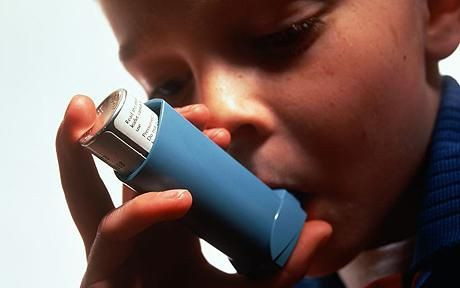Early-Life Air Pollution Strongly Linked To Asthma Development In Minority Children

A new study looked at the causal relationship between air pollution and childhood asthma. Air pollution exposure prior to the development of asthma was noted in order for researchers to definitively determine a difference in a child's asthma condition. Researchers focused on minorities, specifically Latinos and African Americans, with and without asthma from five urban regions in the United States and Puerto Rico. This focus on minorities, according to the team, was in light of their tendency to live in areas with high levels and concentrations of air pollution, in addition to having a higher risk of developing asthma.
The research team, led by scientists at University of California, San Francisco (UCSF), found that when these minority infants are exposed to nitrogen dioxide (NO2), a gas found in motor vehicle air pollution, their chances of developing childhood asthma increased.
The study included 3,343 Latino and 977 African American participants, who, when exposed to every five part per billion of NO2 during the first year of their life, had a 17 percent increase chance of developing asthma later in life.
"Any participant with asthma in this study was exposed to air pollution in infancy, before they developed the disease, which is a step in the right direction in inferring causality," said lead author Katherine K. Nishimura, MPH, a graduate student at the laboratory of the study's senior author Esteban G. Burchard.
Nishimura said what made the study such a significant breakthrough in asthma research is that it was based on the scientists' records of the participants' exposure to air pollution so early in their childhood, before they even developed asthma. In the U.S., the prevalence of asthma has increased by more than 75 percent since 1980, putting pressure on researchers to find answers to such an obvious and increasing problem.
According to the University, researchers said their findings provide stronger evidence that pollution may be the cause of asthma altogether. They are now requesting a tightening of U.S. government standards for annual exposure of NO2, which could mean vehicle regulation such as carpooling laws, public transportation incentives, and a push for more hybrid car purchases.
Since the hybrid vehicle was introduced into the U.S. in 2000, there have been over 200,000 sold every year. The car's combined gasoline engine and electric motor provide the driver with more gas mileage and a guarantee to release fewer pollutants into the environment. Lower fuel consumption reduces the emissions of both carbon dioxide and nitrogen oxides, which, according to LIVESTRONG, are hazardous to human health — with the increase of asthma symptoms for instance.
Asthma is a chronic condition that affects nearly 20 million people and, in severe cases, can be a debilitating condition that can keep children out of school and on the sidelines from physical activity, according to the Centers for Disease Control and Prevention (CDC). There is no cure for asthma and is responsible for nearly two million emergency rooms visits every year.
According to the Environmental Protection Agency, it is important to monitor the air quality index provided by local weather reports and to schedule outdoor activities in the morning, when air quality is better. When outdoor pollutants are inhaled, it can lead to chest pain, coughing, sneezing, digestive problems, dizziness, fever, lethargy, and shortness of breath.
More than 159 million Americans live in areas with air pollution from cars, factories, and power plants.
Although the study defined a clear connection between childhood asthma and an infant's air pollution exposure, Burchard warned that air pollution is not the only culprit. The study looked at the urban minorities of Puerto Rico, which most notably has low air pollution levels but alarmingly the highest asthma prevalence and morbidity rates in the United States.
"This is intriguing, and leaves us more work to do," said Burchard, the director of UCSF Center for Genes, Environment & Health.
Source: Nishimura KK, Galanter JM, Roth LA, Burchard EG. Early Life Air Pollution and Asthma Risk in Minority Children: The GALA II & SAGE II Studies. ATS Journals. 2013.



























